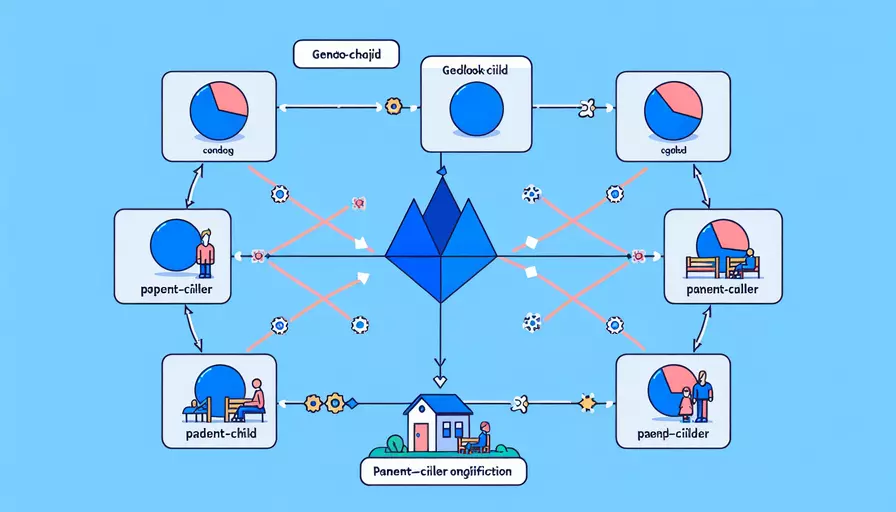
在Vue中,实现父子组件间的同步通信可以通过以下几种主要方法:1、使用props和事件,2、使用Vuex,3、使用provide/inject API。这些方法可以帮助你在不同的场景下实现父子组件的数据同步和通信。
一、使用props和事件
Vue中最常见的父子组件通信方式是通过props和事件。这种方法简单直接,适用于大部分情况。
-
父组件向子组件传递数据(props):
父组件可以通过props向子组件传递数据。子组件在props选项中定义接收的属性。
<!-- ParentComponent.vue --><template>
<div>
<ChildComponent :message="parentMessage" @update-message="updateMessage"/>
</div>
</template>
<script>
import ChildComponent from './ChildComponent.vue';
export default {
components: { ChildComponent },
data() {
return {
parentMessage: 'Hello from Parent'
};
},
methods: {
updateMessage(newMessage) {
this.parentMessage = newMessage;
}
}
}
</script>
<!-- ChildComponent.vue --><template>
<div>
<p>{{ message }}</p>
<button @click="changeMessage">Change Message</button>
</div>
</template>
<script>
export default {
props: ['message'],
methods: {
changeMessage() {
this.$emit('update-message', 'Hello from Child');
}
}
}
</script>
-
子组件向父组件传递数据(事件):
子组件通过$emit方法触发自定义事件,父组件监听该事件并处理数据。
二、使用Vuex
当应用变得复杂时,使用Vuex进行状态管理会更合适。Vuex是一个专为Vue.js应用设计的集中式状态管理库。
-
安装和配置Vuex:
首先需要安装Vuex并进行基本配置。
npm install vuex// store/index.jsimport Vue from 'vue';
import Vuex from 'vuex';
Vue.use(Vuex);
export default new Vuex.Store({
state: {
message: 'Hello from Vuex'
},
mutations: {
updateMessage(state, newMessage) {
state.message = newMessage;
}
},
actions: {
updateMessage({ commit }, newMessage) {
commit('updateMessage', newMessage);
}
},
getters: {
message: state => state.message
}
});
-
在组件中使用Vuex:
父子组件都可以通过mapState, mapGetters, mapMutations, 和 mapActions来访问和操作Vuex中的状态。
<!-- ParentComponent.vue --><template>
<div>
<p>{{ message }}</p>
<button @click="updateMessage('Hello from Parent via Vuex')">Change Message</button>
<ChildComponent/>
</div>
</template>
<script>
import { mapState, mapActions } from 'vuex';
import ChildComponent from './ChildComponent.vue';
export default {
components: { ChildComponent },
computed: {
...mapState(['message'])
},
methods: {
...mapActions(['updateMessage'])
}
}
</script>
<!-- ChildComponent.vue --><template>
<div>
<button @click="updateMessage('Hello from Child via Vuex')">Change Message</button>
</div>
</template>
<script>
import { mapActions } from 'vuex';
export default {
methods: {
...mapActions(['updateMessage'])
}
}
</script>
三、使用provide/inject API
在Vue 2.2.0+中,引入了provide/inject API,用于跨级组件间的通信,适合于祖先和后代组件之间的通信。
-
使用provide在祖先组件中提供数据:
<!-- GrandparentComponent.vue --><template>
<div>
<ParentComponent/>
</div>
</template>
<script>
import ParentComponent from './ParentComponent.vue';
export default {
components: { ParentComponent },
provide() {
return {
message: this.message
};
},
data() {
return {
message: 'Hello from Grandparent'
};
}
}
</script>
-
使用inject在后代组件中注入数据:
<!-- ChildComponent.vue --><template>
<div>
<p>{{ message }}</p>
</div>
</template>
<script>
export default {
inject: ['message']
}
</script>
这种方式适用于不频繁变动的数据传递,因为provide/inject API不适合用于响应式数据。
结论
在Vue中实现父子组件同步通信有多种方法:使用props和事件、使用Vuex以及使用provide/inject API。选择哪种方法取决于具体场景和需求。对于简单的父子组件通信,props和事件足够使用;对于复杂的状态管理,Vuex是最佳选择;而对于跨级组件通信,provide/inject API是一个有效的解决方案。根据项目的实际需求,灵活应用这些方法可以有效提高开发效率和代码的可维护性。
相关问答FAQs:
1. 父子组件之间如何进行同步通信?
在Vue中,父子组件之间可以通过props和$emit方法进行同步通信。父组件可以通过props将数据传递给子组件,子组件可以通过props接收父组件传递的数据。当子组件需要将数据传递回父组件时,可以使用$emit方法触发一个自定义事件,并将数据作为参数传递给父组件。
2. 如何在子组件中更新父组件的数据?
在Vue中,子组件是无法直接修改父组件的数据的。但是可以通过$emit方法将子组件的数据传递给父组件,然后在父组件中更新数据。具体做法是,在子组件中使用$emit方法触发一个自定义事件,并将需要传递的数据作为参数传递给父组件。在父组件中,通过监听这个自定义事件,并在事件处理函数中更新父组件的数据。
3. 如何实现父子组件之间的双向绑定?
在Vue中,父子组件之间的双向绑定可以通过使用v-model指令来实现。v-model指令可以在子组件中创建一个名为value的prop,并在子组件内部使用这个prop进行数据的读取和更新。同时,在父组件中使用v-model指令绑定一个变量到子组件的value prop上,这样就实现了父子组件之间的双向数据绑定。
例如,在父组件中使用子组件时,可以这样写:
<template>
<div>
<child-component v-model="data"></child-component>
</div>
</template>
<script>
export default {
data() {
return {
data: ''
}
}
}
</script>
在子组件中,可以这样使用v-model指令:
<template>
<div>
<input type="text" :value="value" @input="$emit('input', $event.target.value)">
</div>
</template>
<script>
export default {
props: ['value']
}
</script>
这样,父组件中的data变量和子组件中的输入框的值就实现了双向绑定,任何一方的变动都会影响另一方的值。
文章标题:vue如何实现父子同步通信,发布者:飞飞,转载请注明出处:https://worktile.com/kb/p/3656642

 微信扫一扫
微信扫一扫  支付宝扫一扫
支付宝扫一扫 